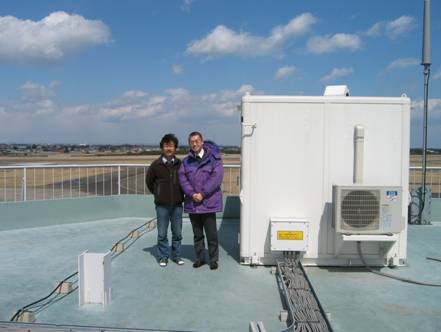Doppler LIDAR as Wake Vortex Sensor
|
In late March 2005, Mr. C.M. Shun of the Hong Kong Observatory spent a couple of days in Japan visiting a new wake vortex sensing facility at the Sendai Airport. The visit was hosted by the Electronic Navigation Research Institute (ENRI) of Japan. ENRI is responsible for conducting studies, researches and development of prototype electronic navigation systems for airports in Japan. At Sendai Airport, a Doppler LIght Detection and Ranging (LIDAR) system was recently set up to study the behaviour of wake vortices generated by aircraft during take-off. Data collection is ongoing and the target of the study is to understand how quickly the aircraft generated wake vortices and associated turbulence would dissipate and move away from the runway. Such knowledge will enable the development of meteorological systems to ensure flight safety when the air traffic continues to grow. Studies of wake vortices have been ongoing at airports in Europe and U.S. in the past several years. ENRI has demonstrated how a LIDAR system similar to the one the Observatory is using for windshear detection could be applied to another important aviation application. |
Mr. C.M. Shun (right) photographed with Dr. Kaku Nobuyuki of ENRI next to the LIDAR at the Sendai Airport |
